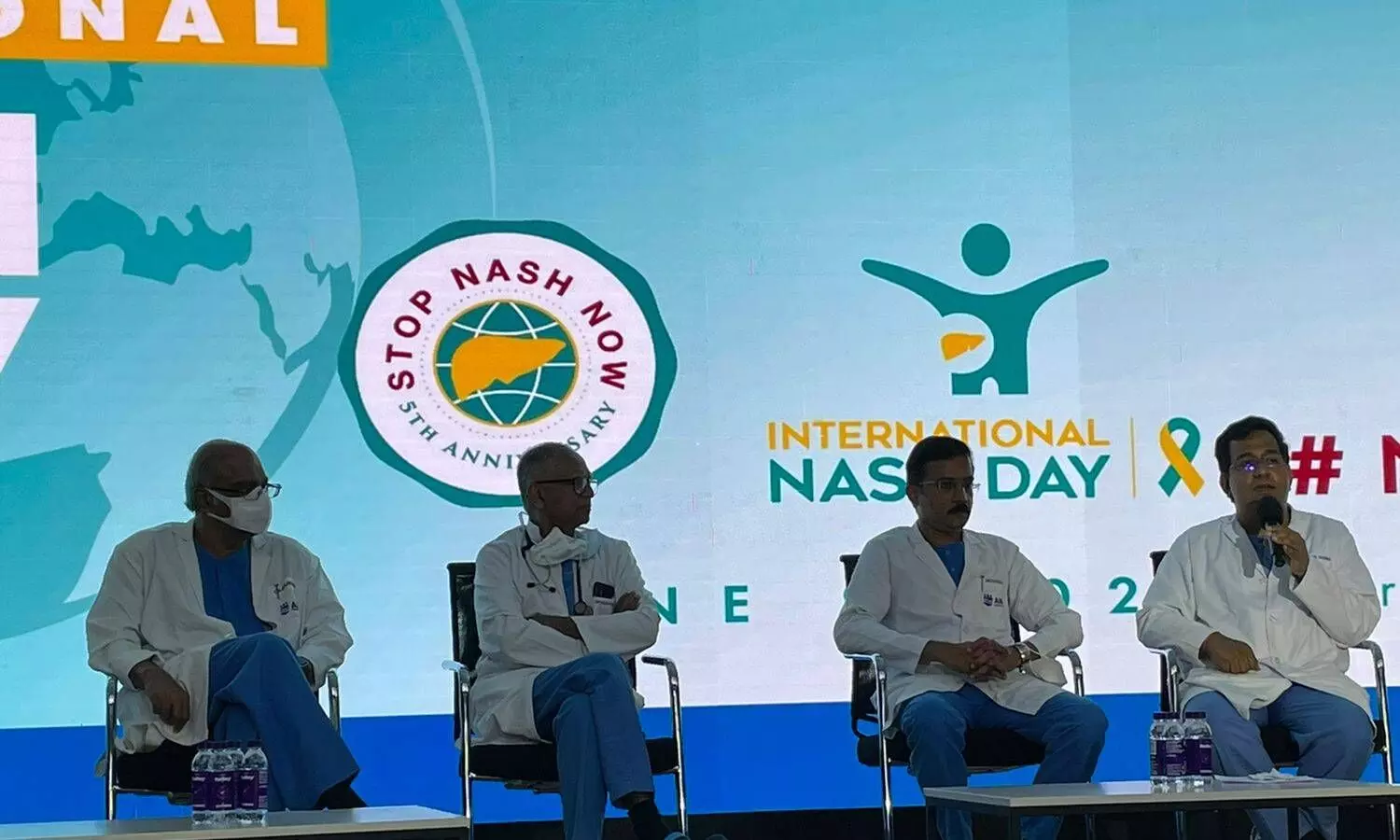Hyd to get world's first Fatty Liver and NASH clinic; to offer comprehensive treatment
The Fatty Liver and NASH clinic will constitute liver experts, cardiologists, obesity management, diabetes management, and nutrition support. The aim is to start a comprehensive, patient-centric, integrated organ treatment plan.
By Newsmeter Network
Hyderabad: A Fatty Liver and NASH clinic, the first of its kind in the world, is going to be set up at the AIG Hospital in Hyderabad. The announcement was made on the occasion of the fifth International NASH Day on 9 June.
The Fatty Liver and NASH clinic will constitute liver experts, cardiologists, obesity management, diabetes management, and nutrition support. The aim is to start a comprehensive, patient-centric, integrated organ treatment plan.
"Our aim is to help people suffering from diabetes, hypertension, and obesity find a comprehensive case programme all under the same roof. As these diseases are interlinked. We need to focus on individual patients and treat the underlying factors that are leading to Non-alcoholic Fatty Liver Disease (NAFLD) and related complications," said Dr. Nageshwar Reddy, chief of gastroenterology at AIG.
He further said, "NAFLD is becoming an epidemic in our country mostly because of the sedentary lifestyle and poor dietary habits. Thirty years ago, 5% of outpatients at AIG were diagnosed with fatty liver every single day. But nowadays, out of the 2,500 outpatients every day, around 20-25% are found to have fatty liver."
What is NASH?
Non-alcoholic StetoHepatitis (NASH) is a liver disorder due to excess fat accumulation and is the most severe form of NAFLD. The important thing is the patient's liver is damaged despite them becoming a teetotaller.
"It is scary when patients who have never touched alcohol are diagnosed with fatty liver. Most importantly, NASH patients do not die of liver damage but due to cardiac arrest. This is why we need to have a holistic approach in the treatment of NASH," said Mithun Sharma, director of hepatology at AIG.
A healthy liver takes around 30 years to become cancerous. All the fat gets disposed of in the liver and when this keeps on adding it becomes NASH. From that condition, it takes around 5-6 years to develop into liver cirrhosis or cancer.
But what's dangerous is that NASH is a silent disease and it hardly shows any symptoms in the initial years. Therefore, one can know about it by doing routine ultrasound tests.
Weight loss, the best solution
Nitin, an endocrinologist at AIG, said that urbanisation is one of the important reasons for fatty liver conditions; people do not move about much. He said weight loss according to the Rule of 10 (i.e., weight loss of 5-10%) through exercise is the best solution to avoid fatty liver.
Dr. Rakesh Kalapala, director of Centre for Obesity and Metabolic Therapy at AIG, also said that weight loss is the most effective way to reverse fatty liver disease and reduce the risk of any progression. "With basic modification in diet and lifestyle habits like incorporating 30-minute physical activity per day, eating fibrous foods, and avoiding high-calorie carbohydrate-rich foods can easily reverse NAFLD," he said.
Door-to-door survey
AIG conducted a door-to-door survey in Telangana which revealed that more than 25% of people in urban areas and 20% of people in rural areas were found to have fatty liver disease. "The concerning factor is that NAFLD doesn't show any symptoms and therefore it is mainly diagnosed incidentally. We are conducting our rural outreach programme with an objective to screen the rural population through abdominal ultrasound. Surprisingly, close to 20% of the scans showed the presence of fatty liver," said Dr. Reddy.
Nutri-genetic study
AIG also conducted a nutri-genetic study with 1,300 genes. In this study, it was observed that people with PNPLA gene mutation had a higher risk of developing liver cirrhosis. However, interestingly the same gene was found to prevent heart diseases. This was an advantage considering the fact that more fatty liver patients died not due to liver damage but due to heart attacks.